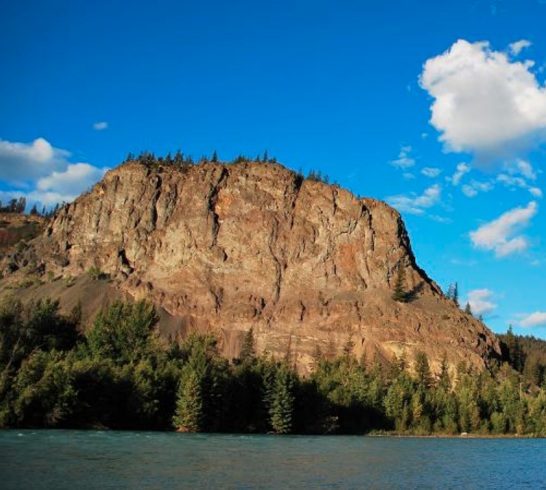The bluffs near the Bull Canyon Campground preserve a significant section of the voluminous Chilcotin Group back-arc basalts - multiple flow units are evident with some possible sedimentary deposition in between them. These basalts are associated with back-arc extension as the North American Plate moves west of the subducting Juan de Fuca plate - thinning and weakening of the lithosphere allows the upwelling of basaltic magma, which has erupted from 20-1 Ma and covered much of the area of our trip (from Lava Canyon downstream).
Here, the notable feature is the infilling of the Chilcotin River paleo-drainage by these basalts. Near the base of the cliff, a section of pillow basalts mark a former river channel that has now been uplifted 10s to 100s of meters above the modern mainstem. This is important for two reasons:
- This valley is at least as old as the pillow basalts, which could be dated by Ar-Ar dating of specific minerals in the basalt. The valley has likely been filled and reincised numerous times since then but indicates that the same paleo-drainages have been exploited for millions of years by the proto-Chilcotin River.
- The pillow basalts, and thus the old river channel, have been uplifted relative to the modern Chilcotin River. This uplift is well-known - the Coast Ranges and Interior Plateau of British Columbia have experienced significant recent uplift - but the amount of uplift is poorly constrained. Here, we have qualitative evidence of this major tectonic process!

